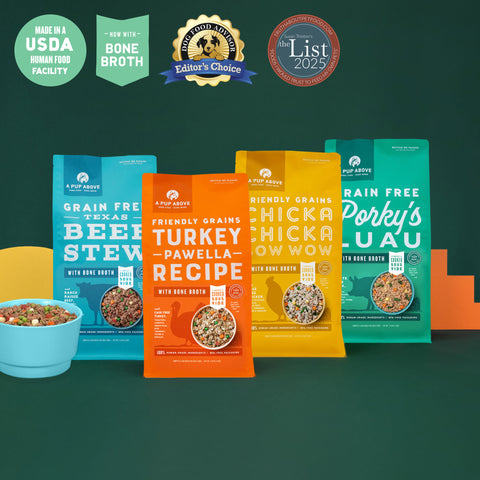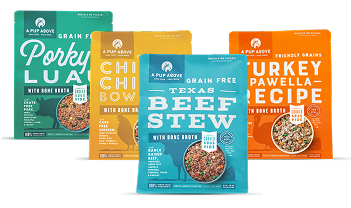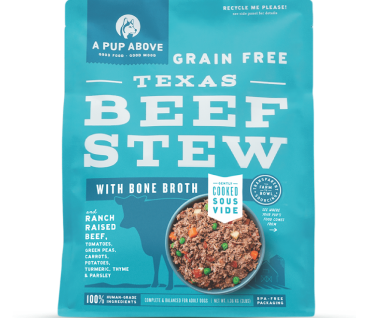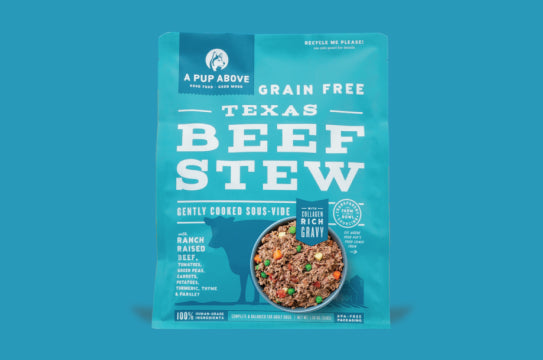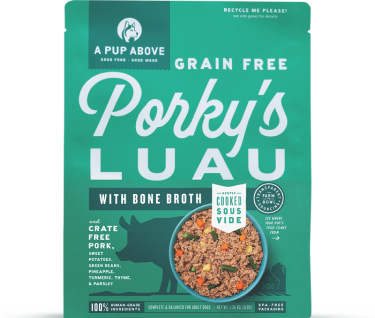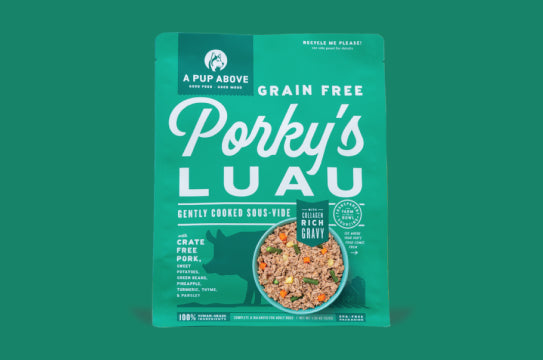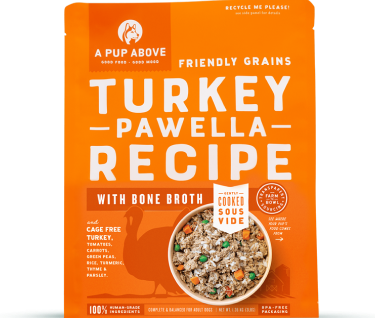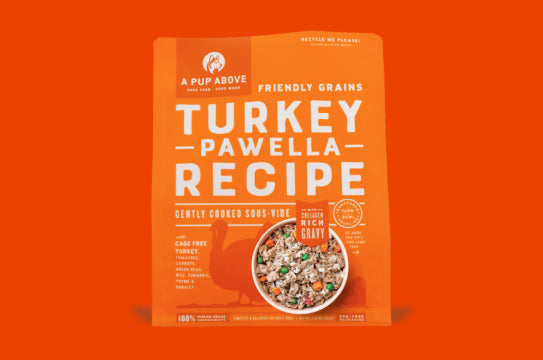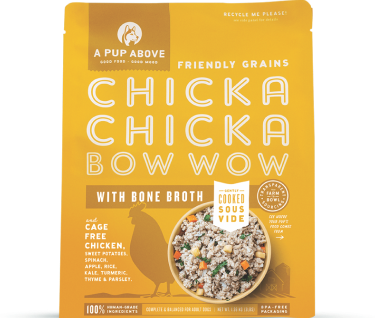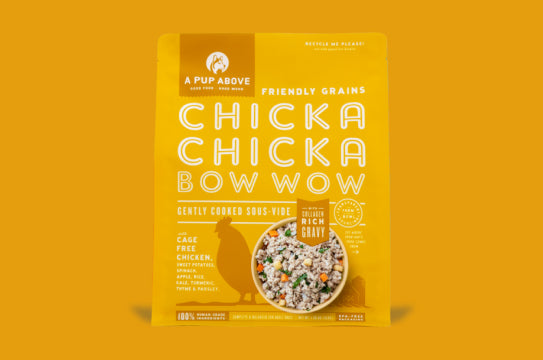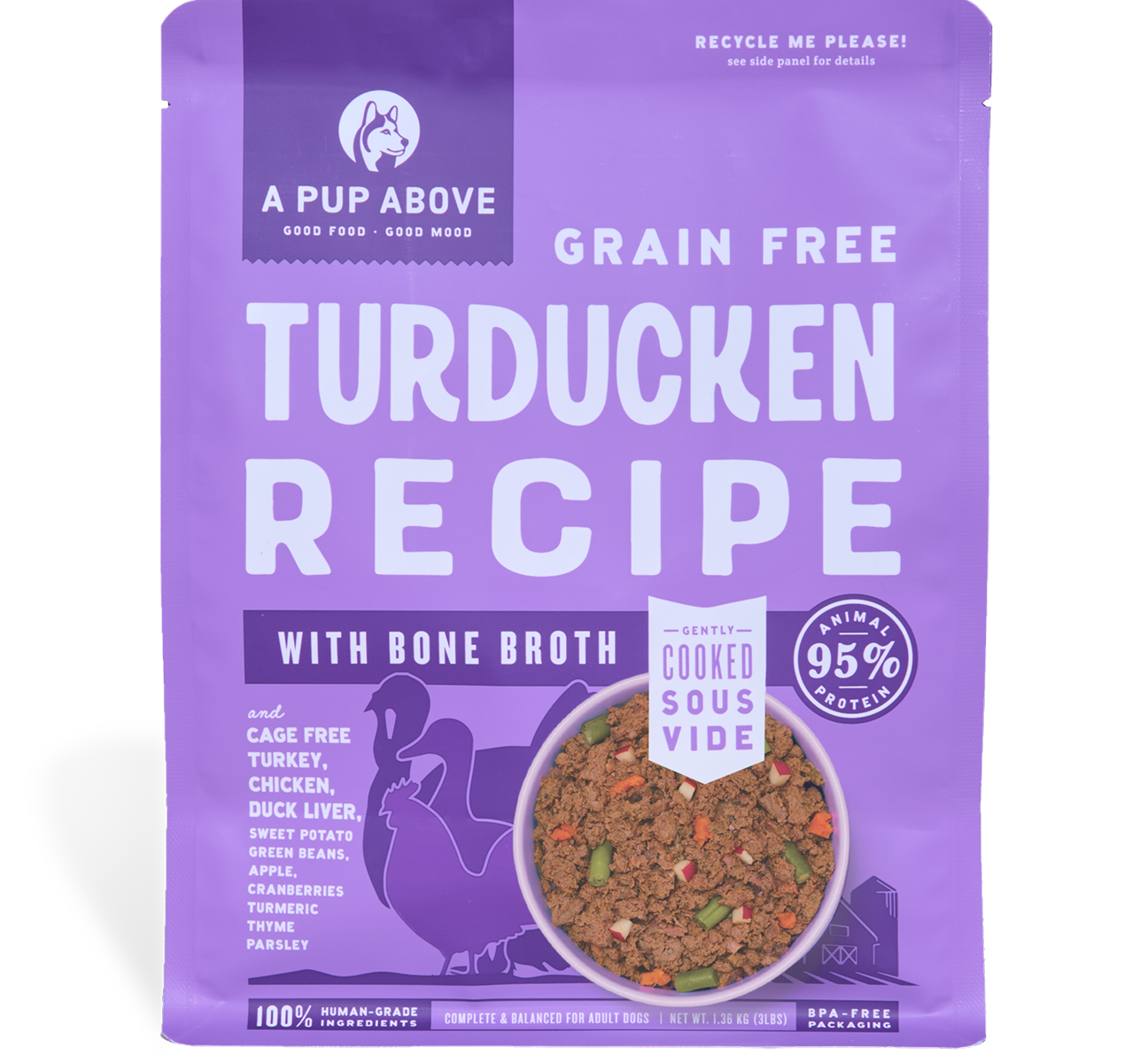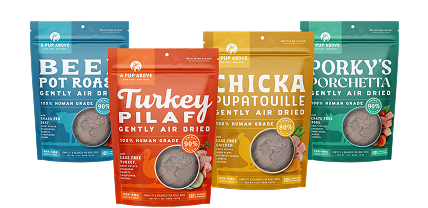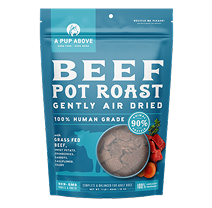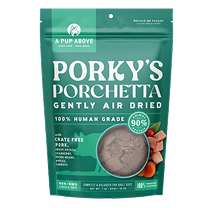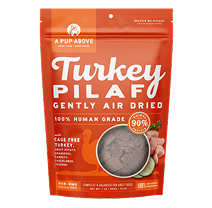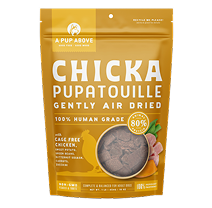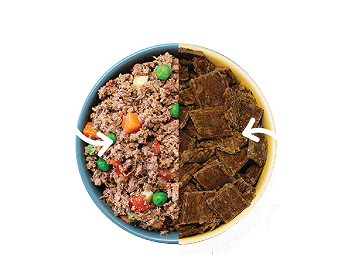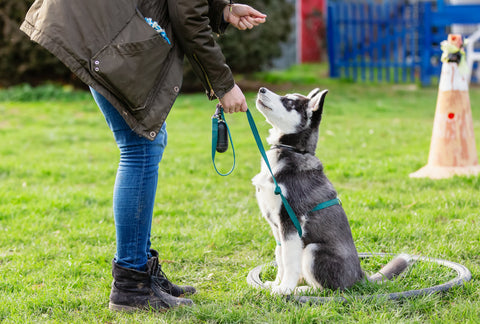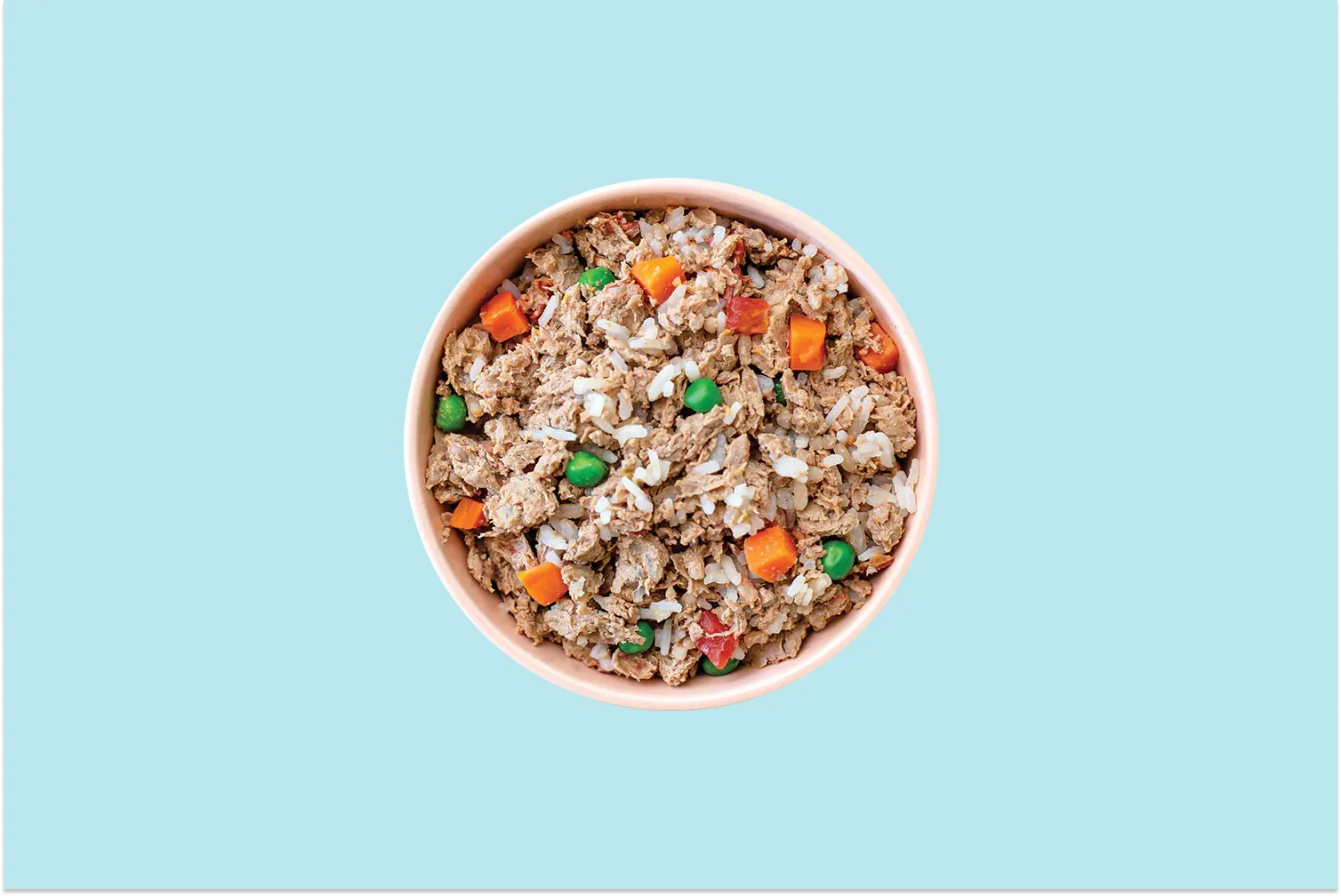
Air-Dried Dog Food vs. Dehydrated Dog Food
Table of Contents
- What Should I Feed My Dog?
- What Is Air-Dried Dog Food?
- What Is Dehydrated Dog Food?
- Differences in the Air-Drying and Dehydration Processes In Making Dog Food
- Nutritional Differences Between Dehydrated and Air-Dried Dog Food
- What To Consider When Choosing Between Air-Dried and Dehydrated Dog Food
- How To Incorporate Dehydrated or Air-Dried Food into Your Dog's Diet
- Feed Your Dog the Best
Every dog owner understands the struggle of finding the perfect diet for their furry friend. With a market brimming with options — from traditional kibble and canned wet food to raw diets and homemade meals — making the right choice can be overwhelming.
Two alternatives that have gained popularity in recent years are dehydrated and air-dried dog foods. These options promise high nutritional value with the convenience of dry food. But what exactly are they, and how do they differ?
Let’s delve into the world of dehydrated and air-dried dog foods, helping you understand their processes, benefits, drawbacks, and the best choices for your canine companion.
What Should I Feed My Dog?
Before we jump into the specifics of dehydrated and air-dried dog foods, let's first understand the landscape of dog food types. The primary categories of dog food are dry (kibble), wet (canned), semi-moist, raw, and homemade diets.
Each has its own merits and demerits, and the right choice depends on a variety of factors, such as your dog's age, breed, size, health condition, and personal preference.
Dry food, or kibble, is widely used due to its convenience, cost-effectiveness, and long shelf life. Wet food, on the other hand, is appreciated for its high moisture content and palatability, though it is more expensive and less shelf-stable than kibble. Semi-moist foods straddle a middle ground but can often contain more artificial colors, flavors, and preservatives.
Raw diets, boasting a more “natural” approach to canine nutrition, come with their own set of controversies, including potential pathogen contamination and nutritional imbalances. Lastly, homemade meals offer complete control over ingredients but require a thorough understanding of canine nutritional needs to prevent deficiencies or excesses.
Pet food manufacturers have developed innovative solutions like dehydrated and air-dried dog foods in the quest for the benefits of raw and homemade diets without their associated risks. These products offer high nutritional value, preserved by removing moisture while retaining the food's raw qualities. Let's explore these intriguing options further.
What Is Air-Dried Dog Food?
Air-dried dog food is another nutrient-rich, convenient alternative to traditional pet food options. While it shares some similarities with dehydrated dog food, it differs in the method of moisture removal and does not require rehydration before feeding.
The air-drying process involves exposing the food to warm air that circulates to gently remove moisture. Importantly, the temperature during this process is carefully controlled to prevent 'cooking' the food, thus maintaining its raw nutritional profile. This method retains a higher moisture level than dehydration, giving air-dried food a slightly softer, more palatable texture.
Air-dried dog food is convenient to use as it doesn't require the addition of water before feeding. You can serve it straight from the bag, just like kibble. However, the air-drying process also results in a product that's more expensive than most other dog food types, including dehydrated food.
Similar to dehydrated dog food, air-dried food can be an ideal choice for those who want to feed their pets a high-quality, raw-like diet but need the convenience of a ready-to-serve meal. Both these options, while pricier, provide superior nutritional value and are easy to store and serve, making them a worthwhile consideration for your pet's dietary plan.
What Is Dehydrated Dog Food?
Dehydrated dog food is a type of dog food that has had nearly all of its moisture content removed through a slow, low-heat process. This technique leaves behind a dry, nutrient-dense food product that is lightweight and convenient.
The process of dehydration works by applying low heat for an extended period. The goal is to remove the water content without 'cooking' the food. Consequently, the proteins, vitamins, and minerals that can be lost or damaged by high-heat cooking methods remain intact in dehydrated food, offering nutritional advantages over traditional kibble.
In terms of use, dehydrated dog food requires rehydration before serving. Adding warm water to the food allows it to expand and regain a texture closer to its original state. It's vital to follow the manufacturer's instructions to ensure the correct ratio of water to food for optimal hydration.
Dehydrated food can be an excellent choice for pet parents who value the high nutritional content of raw or homemade diets but require the convenience of dry food. Despite its higher price tag compared to kibble, many owners find the benefits worth the investment.
Differences in the Air-Drying and Dehydration Processes In Making Dog Food
The essential difference between dehydrated and air-dried dog food lies in the methods used to remove moisture from the food, impacting the end product's texture, usage, and, sometimes, its nutritional content.
Dehydration typically uses a process of low heat and air circulation over a more extended period, often many hours, to gently remove moisture from the food. The prolonged drying time and low heat aim to preserve as much of the food's nutritional content as possible while ensuring harmful bacteria are eliminated. After dehydration, the food becomes compact and lightweight, ideal for storage and transportation.
On the other hand, air-drying involves exposing the food to a steady stream of warm air for a shorter period. The moisture evaporates, leaving behind a dry product.
The air-drying process tends to retain more moisture than dehydration, resulting in a softer texture that many dogs find more palatable. However, like dehydrated food, it's also lightweight and easy to store.
One key point to remember is that both processes aim to remove moisture while minimizing heat exposure to preserve the food's nutritional integrity, particularly the proteins, vitamins, and minerals.
Nutritional Differences Between Dehydrated and Air-Dried Dog Food
Both dehydrated and air-dried dog foods aim to deliver a nutrient-dense diet that closely resembles raw food. However, due to the differences in their processing methods, they may not offer the exact same nutritional benefits.
Dehydrated dog food, because of its more extensive drying process, usually retains less moisture than air-dried food. Consequently, it can be denser and richer in nutrients by weight. However, it's essential to rehydrate dehydrated food properly before feeding to ensure it's easily digestible and palatable for your pup.
On the other hand, while still high in nutrients, air-dried dog food tends to contain a bit more moisture due to its less intense drying process. This additional moisture can make the food softer and possibly more appealing to some dogs. Because it doesn't require rehydration, it's easier to feed as a meal or a treat straight from the bag.
It's essential to understand that the nutrient profiles of both dehydrated and air-dried dog foods can vary significantly depending on the quality of the ingredients used.
High-quality, human-grade meats and vegetables will offer superior nutritional value compared to lower-quality alternatives, regardless of the drying process. As always, it's crucial to carefully read the food's ingredient list and nutritional analysis to understand what you're feeding your pup.
What To Consider When Choosing Between Air-Dried and Dehydrated Dog Food
Choosing between dehydrated and air-dried dog food depends largely on your pup's specific needs and preferences, as well as your lifestyle.
Here are some factors to consider:
- Palatability: Some dogs may prefer the taste and texture of air-dried food due to its retained moisture. On the other hand, some dogs might enjoy the unique texture of rehydrated food. Offering your pup a small quantity of both options could help you determine their preference.
- Nutrition: Both dehydrated and air-dried foods offer high-quality nutrition, but their nutrient profiles can vary. Understanding your pup's nutritional needs can guide your choice. If you have any doubts or your pet has specific dietary requirements, it's best to consult a vet.
- Preparation: Dehydrated food requires rehydration before feeding, adding an extra step in meal preparation. In contrast, air-dried food is ready to serve straight from the bag, which can be more convenient for busy pet parents.
- Storage: Both dehydrated and air-dried foods are easy to store and have long shelf lives. However, after rehydration, dehydrated food needs to be treated like fresh food and stored accordingly.
- Cost: Air-dried food can sometimes be more expensive than dehydrated food due to its quicker, more energy-intensive drying process. However, prices can vary significantly depending on the brand, ingredient quality, and packaging size.
How To Incorporate Dehydrated or Air-Dried Food into Your Dog's Diet
If you decide to introduce dehydrated or air-dried dog food into your pet's diet, remember to do so gradually to avoid upsetting their stomach.
Here are some steps to follow:
- Slow Introduction: Start by mixing a small amount of dehydrated or air-dried food into your dog's regular food. Over a week or two, gradually increase the amount of new food while decreasing the amount of the old food.
- Watch for Reactions: Monitor your dog closely for any changes in behavior, energy levels, stool consistency, and appetite. Stop feeding the new food and consult your vet if you notice any adverse reactions, such as diarrhea or vomiting.
- Maintain Balance: Whether you're using dehydrated or air-dried food as a meal replacement or supplement, ensure your pup's overall diet remains balanced and nutritionally complete.
- Hydrate Appropriately: If you're feeding dehydrated food, make sure to properly rehydrate it according to the package instructions. Even if you're feeding air-dried food, ensure your dog has constant access to fresh water, as these foods are still drier than fresh or canned foods.
- Use as Treats: Both dehydrated and air-dried foods can also be used as high-value treats. They can be particularly helpful for training, given their strong aroma and flavor.
As always, it's crucial to consult your vet or a pet nutrition expert before making significant changes to your pup's diet.
Feed Your Dog the Best
Whether you opt for dehydrated or air-dried dog food, it's clear both options can provide your pet with high-quality, nutrient-rich meals that closely mimic a natural diet. They offer benefits like ease of storage, longevity, and convenience, all while maintaining the nutritional integrity of the ingredients.
Keep in mind that, like humans, every dog is unique and will have different needs and preferences. What works best for one might not work as well for another.
Your dog's breed, age, size, activity level, and overall health all play a part in determining the best diet for them. Thus, it's always wise to consult your veterinarian or a pet nutrition expert when considering a significant diet change.
No matter which food you choose, high-quality food focused on your dog’s nutritional needs should remain the priority. This is where A Pup Above steps in, providing a range of dog foods focused on the science of your dog’s health.
Sources:
Raw food diets in companion animals: A critical review | PMC
Nutrient Loss Comparison Chart | Food Assets
Dehydrating Food: Is It Good For You? Pros and Cons, Nutrition, and More | WebMD
Top Stories

Why Do Dogs Lick Their Paws?

Why Do Dogs Whimper & Make Noises in Their Sleep?

Healthy Vet-Approved Homemade Dog Food Recipes
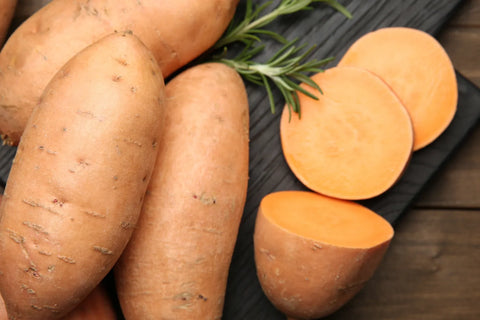
How To Cook Sweet Potatoes for Dogs
